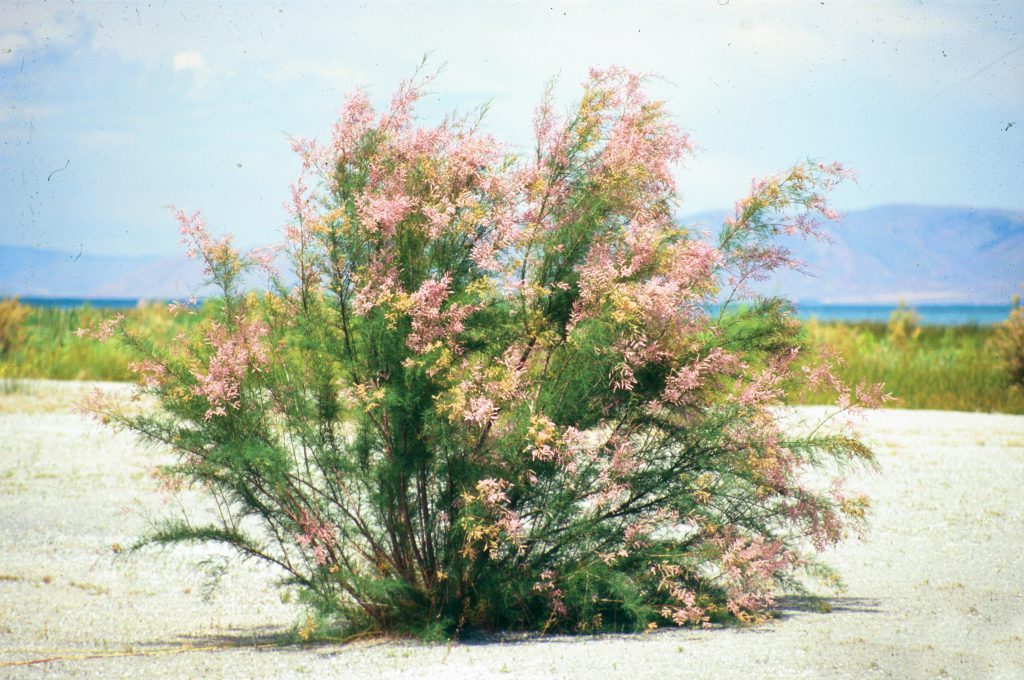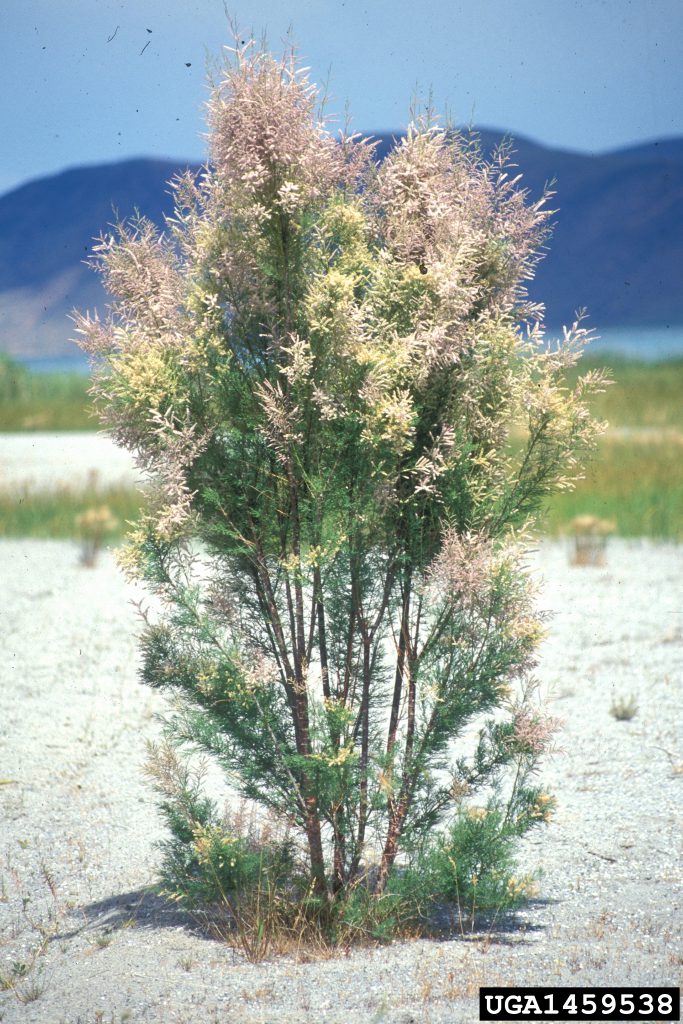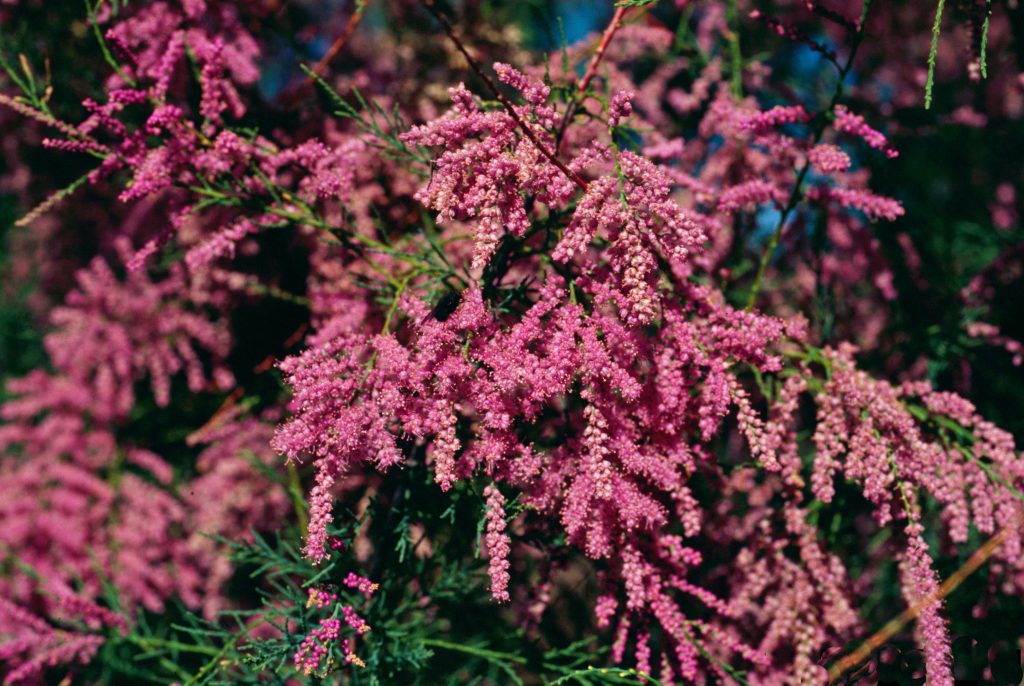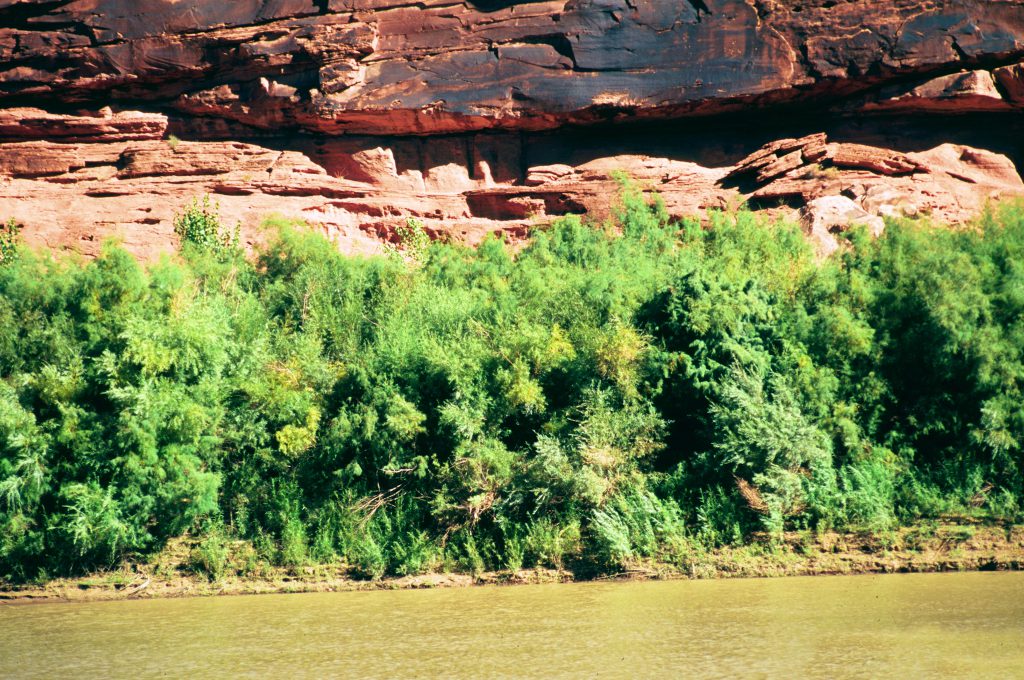Scientific name: Tamarix ramosissima
What Is It?
Saltcedar (Tamarix ramosissima) is an aggressively invasive shrub or small tree. It typically grows in wet and salty soils. It is native to southern Europe, north Africa, and south Asia, and was introduced to the United States as a garden ornamental. A single plant produces many seeds which are dispersed by wind, water, and human activity.
Is It Here Yet?
Yes. Saltceder has been documented across Washington, with larger infestations in eastern Washington.
Why Should I Care?
Saltceder causes damaging impacts to shoreline areas and wetlands. Its deep root system and significant water absorption can lower groundwater tables. Additionally, it produces a salty crust both above and below ground that stresses native plants. This noxious weed increases fire risk and quickly regrows following fires. Saltcedar’s root system can choke streambeds and aquifers, causing flooding. The plant offers poor food and habitat for most species.
How Can We Stop It?
Saltcedar is very difficult to remove. It has a very deep root system, and when cut, can regrow. Prevention is the most efficient method. Prevent seed spread by cleaning boots, equipment, tires, and other gear that may have touched the plant or seeds. Saltcedar is on Washington’s Terrestrial Noxious Weed Seed and Plant Quarantine list, meaning it is prohibited to transport, buy, sell, offer for sale, or distribute saltcedar plants, plant parts, or seeds. Saltcedar is listed as a Class B noxious weed in Washington, meaning it is designated for control in certain state regions.
What Are Its Characteristics?
- Small shrub or tree that loses its leaves each fall. It can grow 4-18 feet tall.
- Many thin, reddish-brown branches that extend vertically. Branches have small, green needle-like leaves and clusters of small pink or white flowers.
- The leaves are often covered in sodium deposits formed by the plant.
Additional Photographs




